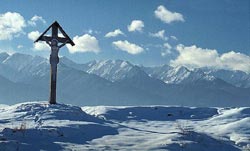| Hunting | |
| Adventure | |
| History | |
| Environment | |
| Getting Around | |
| When to Go | |
| Travels | |
| Attractions | |
| Travel Stories | |
| Our offer | |
| Contact us | |
 |
|
| Transylvania | Brasov | Bran | Scornicesti | Bucharest |
| Black Sea | Danube Delta | Fagaras | Sinaia | Bucovina |
| Maramures | Sighisoara | Iasi | Cluj-Napoca | Timisoara |
|
 |
|||
The Balea tunnel, cutting between Romania's highest mountains - Mount Negoiu (2535m/8314ft) and Mount Moldoveanu (2543m/8341ft) - is 845m (2771ft) long. The Fagaras Mountains offer the most spectacular hiking in the country, with well marked trails and an abundance of wildlife. The main drawback is the difficulty in getting there. The trailheads are 8km (5mi) to 15km (9mi) south of most train stations along the Brasov-Sibiu line, and the region is poorly serviced by bus. The main access point to the trails is Victoria, which you reach by getting off at the train halt 7km (4mi) north at Ucea. If you have a car, follow the Trans-Fagarasan Highway to Poienari Castle, just over the border in Wallachia. This was built for Vlad Tepes, and is regarded by Dracula buffs as the real McCoy. You climb 1480 steps to reach it from the side of a hydroelectric power plant below. |
||||